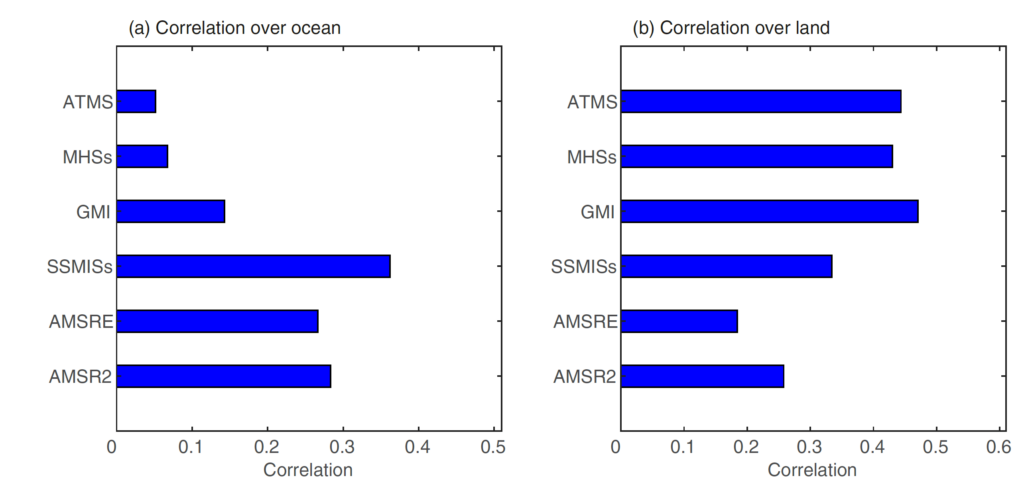Satellite observations provide the only means for snowfall detection and snowfall intensity estimation on a global scale. A new study by ESSIC/CISESS scientists Yalei You, Veljko Petkovic, Lisa Milani, John Xun Yang, and Guojun Gu evaluates level-2 snowfall retrieval results from 11 passive microwave radiometers using the Goddard PROFiling algorithm (GPROF) relative to two spaceborne radars, CloudSat Cloud Profiling Radar (CPR) and the Global Precipitation Measurement (GPM) Ku-band Precipitation Radar (KuPR). The 11 radiometers include six conical scanning radiometers [Advanced Microwave Scanning Radiometer (AMSR) for the Earth Observing System (AMSR-E), AMSR2, GPM Microwave Imager (GMI), and three Special Sensor Microwave Imager/Sounders (SSMIS)] and five cross-track scanning radiometers [Advanced Technology Microwave Sounder (ATMS) and four Microwave Humidity Sounders (MHS)].
The results (e.g., Figure below) show that over ocean conical scanning radiometers have better detection and intensity estimation skills than cross-track sensors, likely due to the availability and usage of the low-frequency channels (e.g., 19 and 37 GHz). Over land, AMSR-E and AMSR2 have noticeably worse performance than other sensors, primarily due to the lack of higher than 89 GHz channels (e.g., 150, 166, and 183 GHz). Over both land and ocean, all 11 sensors underestimate the snowfall intensity. These conclusions, which apply solely to the GPROF version 5 algorithm, hold regardless of using either CPR or KuPR as the reference, though the statistical metrics vary quantitatively.

To access the article, click here: “Evaluation of Snowfall Retrieval Performance of GPM Constellation Radiometers Relative to Spaceborne Radars”.





